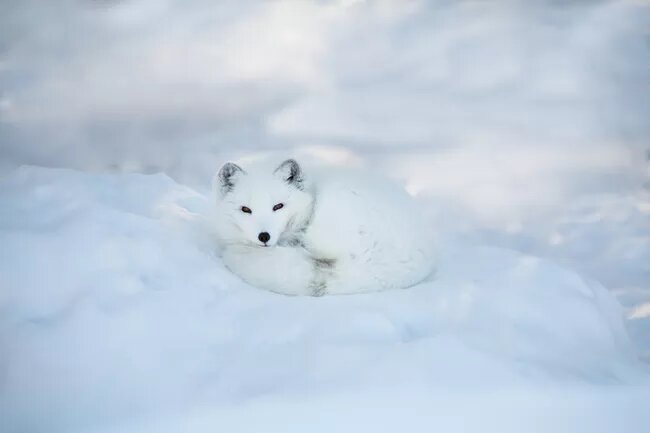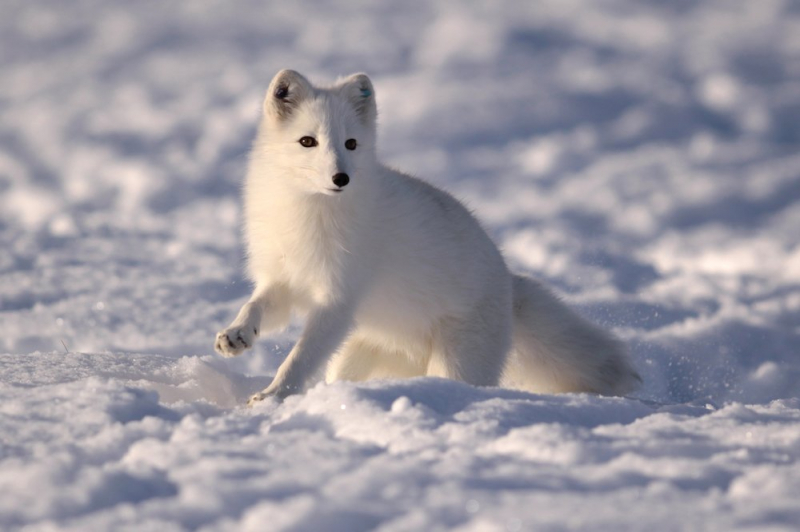Arctic Fox

The bright white coat of the Arctic fox may attract our attention because of its beauty, but it has the opposite effect on tundra predators. This excellent outfit allows the fox to blend in with the white snow, shielding it from eagles, polar bears, and wolves. It also keeps it warm in temperatures as low as 58 degrees below zero, thanks to the fur. What happens, though, when the temperature heats up and the snow melts? The Arctic fox sheds its white coat and replaces it with a brown and blond one as the seasons change, allowing it to blend in with rocks and plants.
These colors aid foxes in their hunting of rodents, birds, and even fish. This is what makes them one of the most amazing camouflage animals and dangerously However, prey might be sparse on the ground in the winter. Arctic foxes will follow the region's top predator—a polar bear—to eat the leftover leftovers from its kills at such times. When veggies are available, foxes will eat them as well. This fox's broad tail, like a cat's, assists with balance. In cold weather, however, an arctic fox's tail (or "brush") is very valuable as a warm blanket.
Scientific Name: Vulpes Lagopus
Distribution: Native to the Arctic and common throughout the Arctic tundra biome.
Size: 46cm to 68cm
















